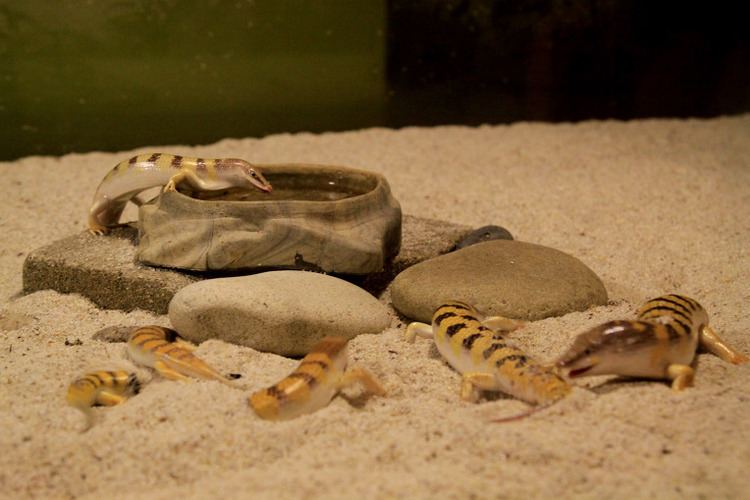Subphylum Vertebrata | Phylum Chordata Class Reptilia Suborder Sauria Rank Species | |
 | ||
Similar Scincus, Scincus scincus, Acanthodactylus schmidti, Stenodactylus doriae, Arabian toad | ||
The eastern skink (Scincus mitranus), also commonly known as the Arabian sand skink and the sand fish, is a species of lizard in the skink family (Scincidae).
Contents
Etymology
The specific name, mitranus, is in honour of Indian archeologist and anthropologist Babu Rajendralala Mitra (1824–1891).
Description
S. mitranus may grow to a length of 20 cm (7.9 in) and have an orange-brown or sand-coloured back, and a white underside. On the side it has a line or spots in a light colour, and the back and legs have vague dark bands. The snout is shaped like a bill, and the legs and tail are short.
Behaviour
The eastern skink can run quickly, or slide over the sand and dig itself in quickly when it is in danger.
Diet
S. mitranus preys on several kinds of arthropods, especially centipedes and beetles.
Geographic range and habitat
S. mitranus is found in the Arabian Peninsula (Kuwait, Oman, Qatar, Saudi Arabia, and the United Arab Emirates), western Iran, and Pakistan. Its presence in Pakistan is disputed.
Habitat
S. mitranus is associated with loose sand dune (aeolian) habitats.
Reproduction
The eastern skink is viviparous, which gives it an advantage compared to other species in the area, as its eggs cannot desiccate.
